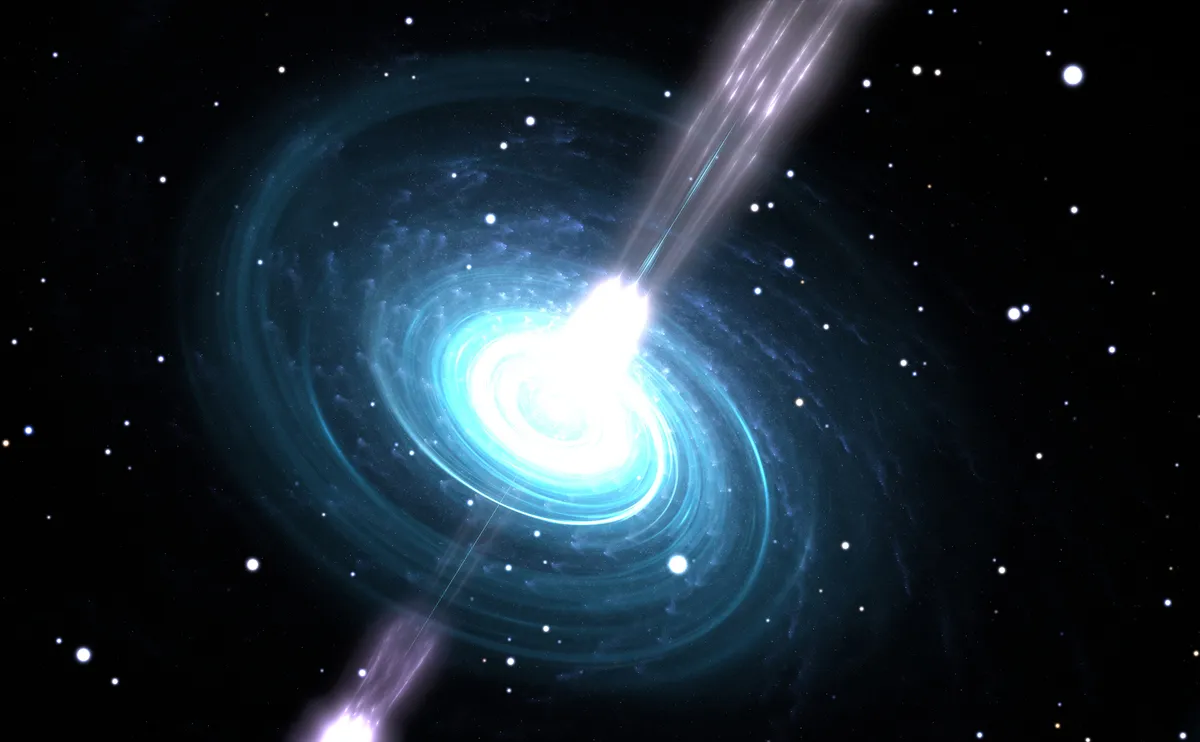Some stars twinkle and some stars pulse like cosmic lighthouses, but astronomers have just discovered a new class of star behaving in a way they've never seen before.
The object is known as ASKAP J1832−0911 (ASKAP J1832 for short) and is located 15,000 lightyears from Earth.
Observations are giving astronomers new clues about this strange, previously-unseen class of cosmic object.
Mysterious radio and X-ray behaviour
ASKAP J1832 is one of a class of objects called 'long period radio transients'.
First discovered in 2022, these deep-space objects emit a varied, but regular, pulse of of radio waves that can be observed by some our most powerful telescopes.
The variations seen in ASKAP J1832 come in regular bouts lasting tens of minutes.
This, say astronomers, is thousands of times longer than the length of the variations seen in pulsars, which are spinning neutron stars that act like celestial lighthouses, emitting a regular pulse as they rotate.
ASKAP J1832 cycles in radio wave intensity every 44 minutes, making it a long period radio transient.
Astronomers discovered it using NASA’s Chandra X-ray Observatory and the Square Kilometer Array Pathfinder radio telescope in Australia.
The results were published in the journal Nature.

Never seen before
The team that discovered ASKAP J1832 is regularly varying in X-ray signals every 44 minutes, marking the first time such an X-ray signal has been found in a long period radio transient.
"Astronomers have looked at countless stars with all kinds of telescopes and we’ve never seen one that acts this way," says study author Dr Ziteng Wang from the Curtin University node at the International Centre for Radio Astronomy Research (ICRAR) Australia.
"It’s thrilling to see a new type of behaviour for stars."
The team found ASKAP J1832 also dropped off in X-rays and radio waves substantially over a period of six months.
Together with the 44-minute cycle in X-rays and radio waves, this behaviour is unlike anything ever seen before in our Galaxy.
Many questions remain.
Is ASKAP J1832's behaviour typical of long period radio transients? Could its bizarre behaviour help astronomers understand the origin of these objects?
"We looked at several different possibilities involving neutron stars and white dwarfs, either in isolation or with companion stars," says co-author Dr Nanda Rea of the Institute of Space Sciences in Barcelona, Spain.
"So far nothing exactly matches up, but some ideas work better than others."

What ASKAP J1832 could be
ASKAP J1832 is unlikely to be a pulsar or a neutron star pulling material from a companion star, say the astronomers, because it's not matching the intensities of radio and X-ray signals normally seen in these objects.
They say some of ASKAP J1832’s properties could be explained as a neutron star with an extremely strong magnetic field, called a magnetar, aged at over 500,000 years.
And yet ASKAP J1832's bright and variable radio emission are difficult to explain in such an old magnetar.
Most dramatically, ASKAP J1832 seems to lie within the remnants of an exploded star: a supernova remnant.

These objects often contain a neutron star, one of the densest objects in the Universe and the leftover husk of a star that has gone supernova.
But the team say this is likely a 'line of sight' observation: the supernova remnant and ASKAP J1832 aren't related, they just appear close together from our perspective on Earth.
This has led the team to consider that ASKAP J1832 perhaps does not contain a neutron star.
They also say an isolated white dwarf doesn't explain what they're seeing, but a white dwarf with a companion star might.
For now, ASKAP J1832's identity remains a mystery.
"We will continue to hunt for clues about what is happening with this object, and we’ll look for similar objects," says study co-author Dr Tong Bao of the Italian National Institute for Astrophysics (INAF) – Osservatorio Astronomico di Brera in Italy.
"Finding a mystery like this isn’t frustrating — it’s what makes science exciting."
Read the science paper at arxiv.org/abs/2411.16606

